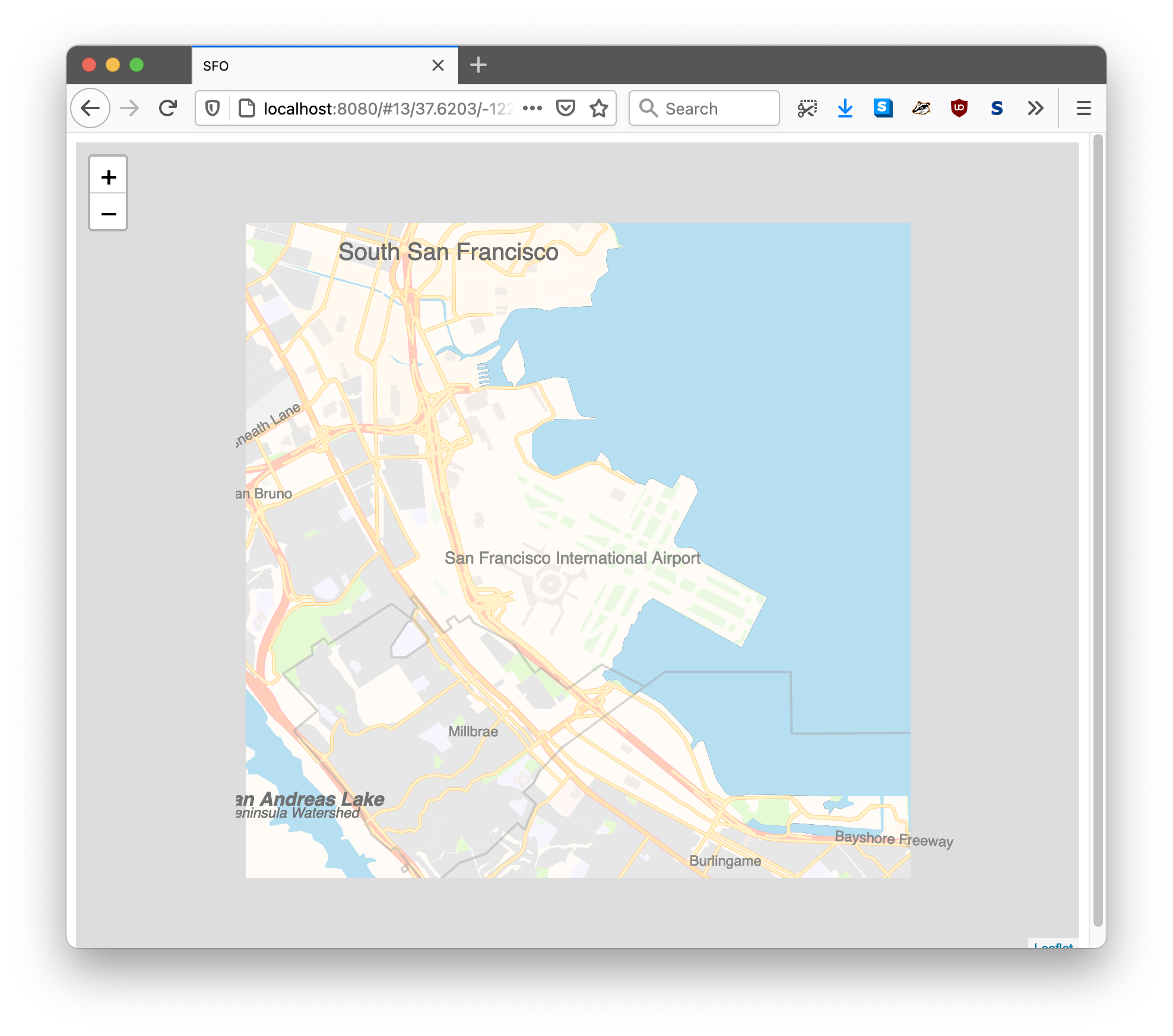go-http-protomaps is an HTTP middleware package for including Protomaps.js (v0.15.0) assets in web applications.
go-http-protomaps is an HTTP middleware package for including Protomaps.js assets in web applications. It exports two principal methods:
protomaps.AppendAssetHandlers(*http.ServeMux, *ProtomapsOptions)which is used to append HTTP handlers to ahttp.ServeMuxinstance for serving Protomaps JavaScript files, and related assets.protomaps.AppendResourcesHandler(http.Handler, *ProtomapsOptions)which is used to rewrite any HTML produced by previous handler to include the necessary markup to load Protomaps JavaScript files and related assets.
package main
import (
"embed"
"log"
"net/http"
"net/url"
"github.com/sfomuseum/go-http-protomaps"
)
//go:embed index.html sfo.pmtiles
var staticFS embed.FS
func main() {
tile_url := "/sfo.pmtiles"
static_fs := http.FS(staticFS)
static_handler := http.FileServer(static_fs)
mux := http.NewServeMux()
mux.Handle(*tile_url, static_handler)
pm_opts := protomaps.DefaultProtomapsOptions()
pm_opts.TileURL = *tile_url
protomaps.AppendAssetHandlers(mux, pm_opts)
index_handler := protomaps.AppendResourcesHandler(static_handler, pm_opts)
mux.Handle("/", index_handler)
err = http.ListenAndServe(":8080", mux)
}
Error handling omitted for brevity.
$> make cli
go build -mod vendor -o bin/example cmd/example/main.go
A simple example web application that uses the go-http-protomaps middleware and displays a map.
$> ./bin/example -h
Usage of ./bin/example:
-protomaps-tile-url string
A custom file://, http:// or https:// URI pointing to a valid Protomaps tiles bundle. (default "/sfo.pmtiles")
-server-uri string
A valid aaronland/go-http-server URI (default "http://localhost:8080")
The example application contains an embedded Protomaps tiles database file so the easiest way to test things is like this:
$> ./bin/example
2021/04/28 07:45:57 Listening for requests on http://localhost:8080
And then when you open the URL http://localhost:8080 in your web browser you should see something like this:
The example application also supports loading .pmtiles databases from remote locations. For example:
$> ./bin/example -protomaps-tile-url https://static.sfomuseum.org/pmtiles/sfo.pmtiles
2021/04/28 07:48:11 Listening for requests on http://localhost:8080
If you want to load a local file you'd do this:
$> ./bin/example -protomaps-tile-url file:///usr/local/data/sfo.pmtiles
2021/04/28 07:48:53 Listening for requests on http://localhost:8080
In the case of file:// URLs the example application will create an http.Dir handler for the root folder of the URL (/usr/local/data/) and then route the filename (/sfo.pmtiles) to that handler.
If you are serving your Protomaps .pmtiles databases from an S3 bucket you'll need to make that you have CORS enabled for that bucket. For example:
[
{
"AllowedHeaders": [
"*"
],
"AllowedMethods": [
"GET",
"HEAD"
],
"AllowedOrigins": [
"*"
],
"ExposeHeaders": [],
"MaxAgeSeconds": 3000
}
]
Be sure to allow the HEAD method. It took me a while to remember this was necessary the first time I set things up.
If you are serving your Protomaps .pmtiles databases from a CloudFront endpoint you'll need to make sure you do the following:
- Ensure that the
Allowed HTTP Methodssetting is configured to allow "GET, HEAD, OPTIONS". - Ensure that the
Cache Based on Selected Request Headerssetting is configured to use a "whitelist". - Add the following default headers to the whitelist:
Access-Control-Request-Headers,Access-Control-Request-Method,Origin. - Add the following custom headers to the whitelist:
Range.
